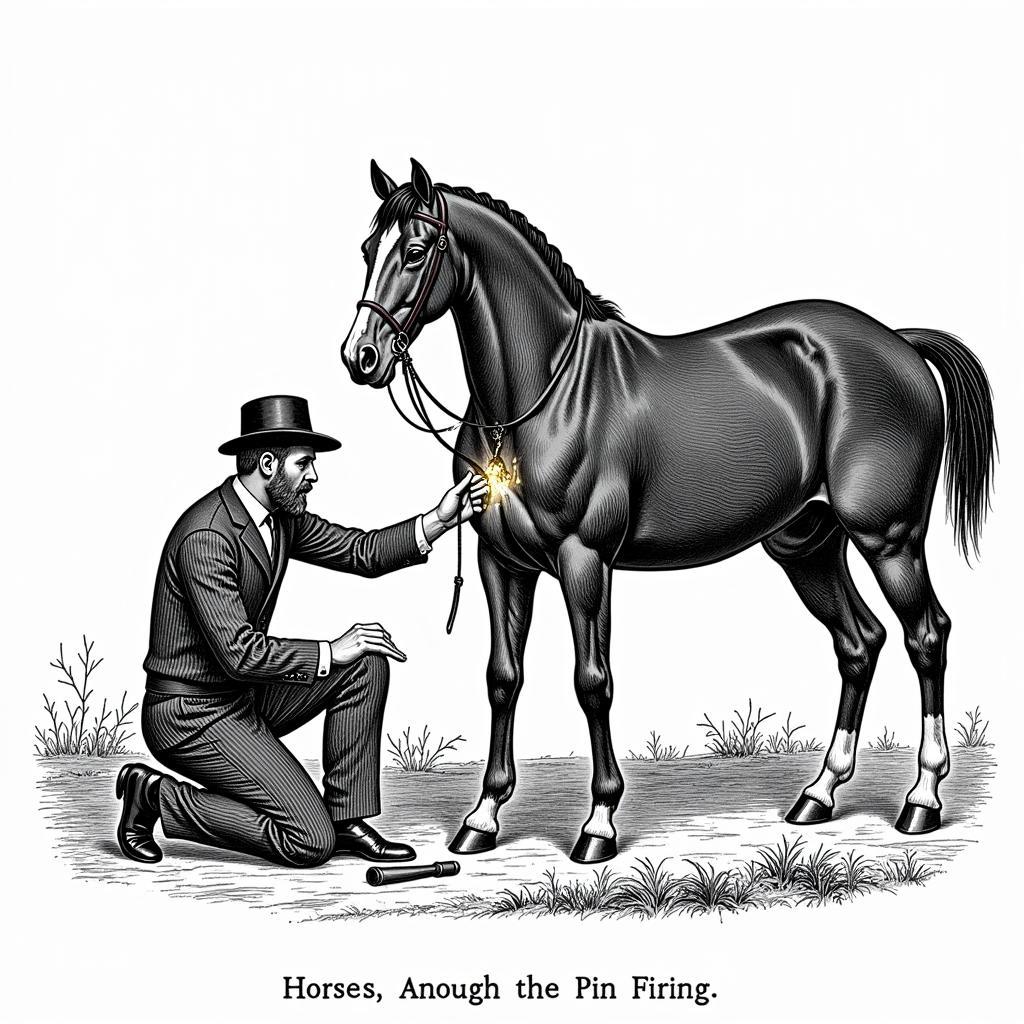The term “Pin Fired Horse” often sparks curiosity and confusion among horse enthusiasts. Unlike breeds or disciplines, it doesn’t describe a specific type of horse but rather a historical veterinary practice. Pin firing, formally known as counter-irritation, involved applying hot irons to a horse’s skin, typically near an injured or inflamed area. This technique, widely practiced in the past, aimed to stimulate healing and alleviate lameness.
 Veterinary pin firing procedure on a horse leg
Veterinary pin firing procedure on a horse leg
A Controversial History
Pin firing on horses dates back centuries, with roots in ancient Greece and Rome. The practice was based on the belief that creating a superficial burn would draw blood and inflammation away from the underlying injury, promoting healing. While seemingly barbaric by today’s standards, pin firing was considered a legitimate treatment for various equine ailments, including:
- Tendon and ligament injuries: Pin firing was often used to address bowed tendons, suspensory ligament injuries, and other soft tissue issues in horses.
- Arthritis and joint pain: Veterinarians believed that the heat from pin firing could reduce inflammation and alleviate pain associated with arthritis and other degenerative joint conditions.
- Navicular disease: This debilitating hoof condition often led to lameness, and pin firing was seen as a potential treatment option.
However, the effectiveness of pin firing remained a subject of debate even in its heyday. While some horse owners and veterinarians reported positive results, the practice lacked scientific evidence to support its claims. Moreover, pin firing was undeniably painful for horses, often leading to complications like infections, scarring, and further lameness if not performed correctly.
The Decline of Pin Firing
As veterinary medicine advanced, particularly in the 20th century, pin firing gradually fell out of favor. More humane and effective treatments emerged, such as:
- Regenerative therapies: Techniques like stem cell therapy and platelet-rich plasma injections gained traction for their ability to promote natural healing in injured tendons and ligaments.
- Controlled inflammation: Medications like non-steroidal anti-inflammatory drugs (NSAIDs) provided targeted pain relief and reduced inflammation without the need for invasive procedures.
- Corrective shoeing: Farriers and veterinarians began collaborating more closely to develop specialized shoeing techniques to support injured limbs and promote healing.
Today, pin firing on horses is widely considered outdated and inhumane. The practice is banned or restricted in many countries, and ethical concerns have largely relegated it to the history books.
Recognizing the Signs of a Pin Fired Horse
While pin firing is no longer a common practice, you might still encounter horses bearing the marks of this historical treatment. The most telltale sign is the presence of round, white, hairless scars, often arranged in a circular pattern on the horse’s legs. These scars can vary in size and prominence depending on the severity of the original treatment.
It’s important to remember that a pin fired horse is not inherently unsound or unhealthy. Many horses who underwent this procedure in the past went on to live long and fulfilling lives. However, it’s essential to acknowledge the historical context of pin firing and appreciate the advancements in veterinary medicine that have led to more humane and effective treatments for our equine companions.
Need More Help?
Have questions about your horse’s health or well-being? Our team of experts at Justus Horses USA is here to help! Contact us at 0772127271, email us at [email protected], or visit us at QGM2+WX2, Vị Trung, Vị Thuỷ, Hậu Giang, Việt Nam. We’re available 24/7 to provide support and guidance.